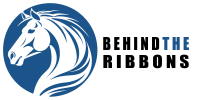Just like us, horses’ dietary requirements depend on their age, size, health status, and level of activity. However, a rule of thumb is that a horse should consume about 2% of its body weight in fodder each day, meaning a 1000-pound horse would eat about 20 pounds of food.
Every horse owner or enthusiast understands the importance of a well-balanced, nutritious diet in maintaining a horse’s health and well-being. But a question that often arises is, “How much does a horse actually eat?” The answer to this question isn’t a one-size-fits-all, but let’s delve into the main factors that determine a horse’s dietary needs.
At a fundamental level, a horse’s diet should primarily consist of forage, like hay or grass. A typical guideline is that a horse should consume about 1.5% – 3% of their body weight in forage each day. For a 1,000-pound horse, this equates to around 15 to 30 pounds of food daily. However, these figures are flexible and can be adjusted based on various factors.
The horse’s activity level significantly influences their food intake. A horse involved in heavy work or intense training requires more calories, thus needing more food compared to a sedentary or lightly worked horse. Similarly, growing foals, pregnant mares, and lactating mares have increased nutritional demands, necessitating a larger food intake.
The horse’s size and weight are also vital considerations. Larger horses naturally require more food than their smaller counterparts. For instance, a Clydesdale will eat substantially more than a Shetland pony, simply due to the difference in size and metabolic needs.
Interestingly, the season also impacts a horse’s dietary needs. In colder climates, horses burn more calories to stay warm, thereby increasing their food intake. Conversely, in warmer seasons, their food consumption might decrease.
Alongside quantity, the quality of the feed is paramount. Horses are ‘trickle feeders’ by nature, evolved to graze and consume small amounts of food throughout the day. Providing free access to high-quality forage helps emulate this natural behavior and maintain a healthy digestive system.
In addition to forage, horses often need supplemental feeds, such as grains, fruits, vegetables, or commercially prepared feed. The amount and type of these additions depend on the horse’s individual needs and should be determined in consultation with a veterinarian or equine nutritionist.
In conclusion, while the “2% rule” is a handy starting point, every horse is an individual with unique dietary needs. The challenge lies in fine-tuning these needs based on your horse’s age, breed, weight, activity level, and health status. Remember, a balanced diet is not just about quantity, but also about quality, variety, and timing, ensuring that your equine friend stays healthy, happy, and ready for whatever adventures lie ahead.







